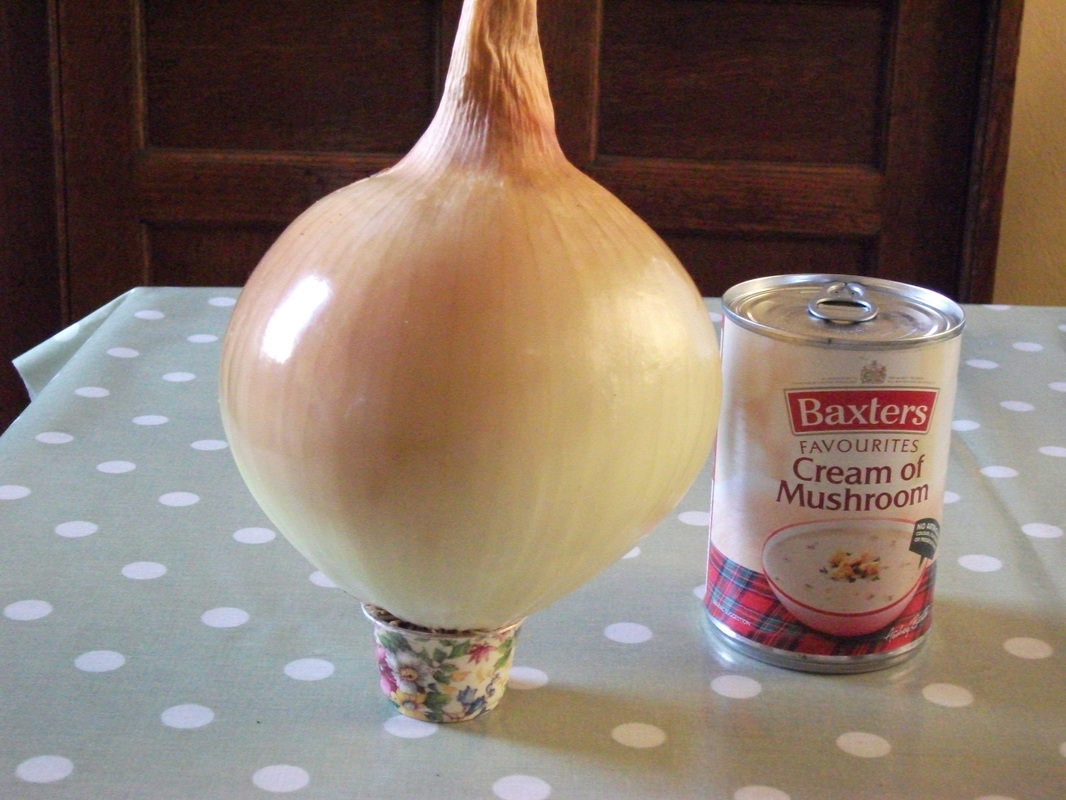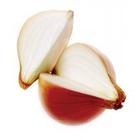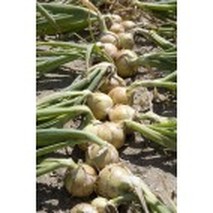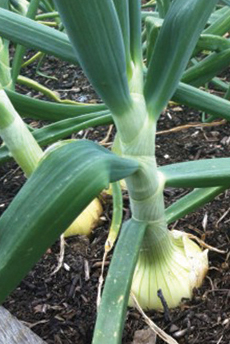| This year I will be trying using seaweed extract (available from the Trading Store) on my onions, having had great success with it last year on leeks. I will also be cutting down on high-nitrate fertiliser and dressing the soil with superphosphate (also available from the Trading Store), in an attempt to produce stronger roots and more disease-resistant foliage. Click here to go to an interesting article on using seaweed extract when growing onions. |
|
Yes, sets are easier, and if you have experienced no disease problems, go ahead. However, experience has shown that seed-grown plants are less vulnerable to basal rot. As far as grey mildew goes, you can choose a mildew-resistant variety such as 'Santero' (shown above). Click on the picture to go to Kings Seeds website, do an online search or check out Wilkinsons or your garden centre.
0 Comments
Most years, by now, we'd be wailing about drought and facing a probable hosepipe ban. However, because of the exceptionally wet winter, the water table is still very high.
Obviously, sites vary. But even those on the better drained sites still have a lot of water in the ground. Several novices have said recently to us "But the soil is bone dry!". Oh dear, the old-timers think, they have no idea what 'bone dry' is really like. On clay soils, the water is only an inch or so down, and rain is forecast for the end of the week again! Watering too much doesn't help your plants. They will be stronger and healthier if they are obliged to put down roots into the moisture below them. Watering will only encourage weak growth and may lead to serious problems if the soil becomes over-wet. This is especially true on clay soils. So put that watering can away!!! When do you need to water? Obviously anything in a container will need artificial watering. But even plants in greenhouses, if they are planted into the soil, will have access to the residual moisture from the winter rain. Newly planted stuff - cabbage plants for example - will need "puddling in" with a generous watering when planted, but do not assume they will need regular watering afterwards. Check the soil below the surface for water before adding more. A 'dust mulch' created by hoeing the surface soil to a loose consistency will help retain that natural moisture. So will a mulch of grass clippings, or anything else which slows down evaporation. It has been an unusually early spring, and that has caught gardeners on the hop. However, the weather we're having right now is pretty much normal for April - except we'd like some more of those April showers, please.
In the old cottage gardens, potatoes were traditionally planted on Good Friday. Why, when Easter is in a different place each year, and the weather is to variable? Why - because it was one of the few days the agricultural labourer could rely on having as a day off!!! Another old way of deciding planting times was to say you could put the potatoes in when you could sit on the ground with your trousers down. Not a technique we'd recommend in the relatively public space of the allotments - although, curiously, not unrelated to the navigational techniques of the Polynesian islanders! However, it is clearly a way of testing soil temperature - much more important for spuds than the air temperature. You can take a modern approach and buy a cheap soil thermometer. Plant and sow when the soil temperature two inches down (about 5cm) is 5degC or above. Particularly important when sowing parsnips, which hate a cold soil! Spuds put in now will be a little later but you've still time to get a really good crop. 'Early' varieties aren't especially hardy, they're just quick to mature - so put them in now and you'll be eating the results before you know it. Oh, you allotmenteers on sites with light, sandy soil, you just don't know how lucky you are. Some of us are staring at a solid, sullen mess with the remains of a film of algae on it. Stick a fork in and it comes up like cold custard.
It will be hard work, but don't despair. We've added a page to the ADVICE & INFORMATION section just for you. Click here to go to SOIL PREPARATION, how do I get a 'FINE TILTH'? It has been the wettest winter since the days of George III. If we lived back then, we'd be facing famine. As it is, it's just very depressing.
The soil is still too wet to work in many places, but with rising temperatures and (fingers crossed) less rain, it will dry out surprisingly quickly. The window of opportunity to repair the damage will be alarmingly brief. The main damage done by the wet weather has been to compact the soil. If you got your winter digging done before the deluge, well done, you lucky (hard working) *********. If you left it just that little bit too late, you are faced with doing it now with the prospect of few frosts to break up the texture. Either way, the urgent thing is to get air back into the topsoil. The roots of plants need air as much as they need water, and some plants need it more than others. When it says a plant needs "well-drained soil", that's what we're really talking about - air! You can fork soil over, rotovate it or trust the worms to do the job for you by laying organic matter like compost heap compost, or mushroom compost, on the surface. All will help. If rotovating, take care not to hammer a solid layer at the maximum depth of the tines - your aim should be to go deep and fluff up. Lay paths of boards on the soil to walk on - treading the wet soil down will force the air back out again. If your soil is very clayey, you can lime areas where you are putting cabbages, onions, garlic, swede and turnips quite heavily to counteract sourness and help the soil crumble. You can lime lightly where salads or peas and beans are going in, but not at all for potatoes, runner beans, and tomatoes. |
Kent's climate is drier, hotter and has a longer growing season than the average for the UK. Advice in gardening books may not fit Kent. This blog has local tips on what will grow and when to do garden jobs.
SEND YOUR SEASONAL SUGGESTIONS IN BY USING OUR ONLINE POSTBOX Archives
December 2015
Categories
All
|




 RSS Feed
RSS Feed
